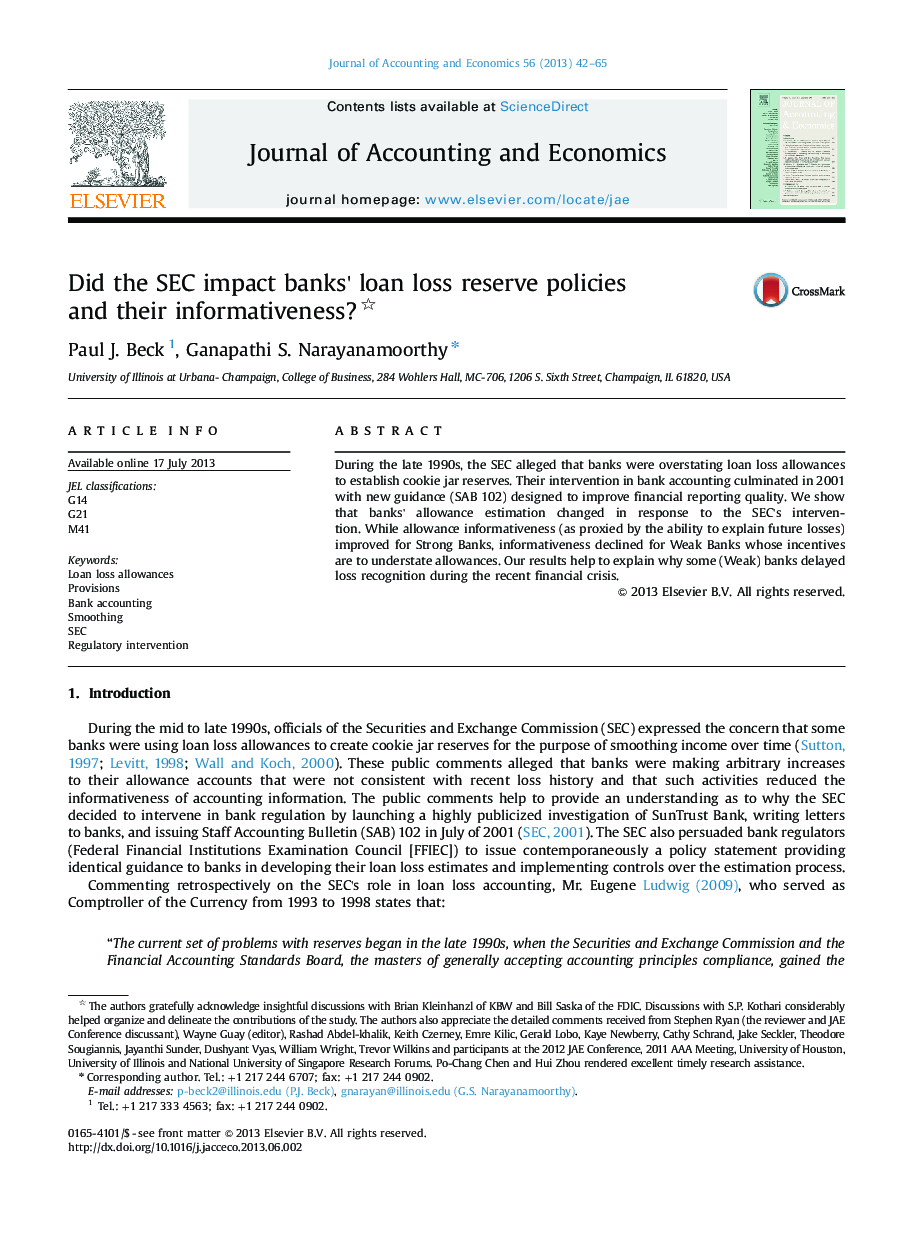| Article ID | Journal | Published Year | Pages | File Type |
|---|---|---|---|---|
| 5086693 | Journal of Accounting and Economics | 2013 | 24 Pages |
Abstract
During the late 1990s, the SEC alleged that banks were overstating loan loss allowances to establish cookie jar reserves. Their intervention in bank accounting culminated in 2001 with new guidance (SAB 102) designed to improve financial reporting quality. We show that banks' allowance estimation changed in response to the SEC's intervention. While allowance informativeness (as proxied by the ability to explain future losses) improved for Strong Banks, informativeness declined for Weak Banks whose incentives are to understate allowances. Our results help to explain why some (Weak) banks delayed loss recognition during the recent financial crisis.
Related Topics
Social Sciences and Humanities
Business, Management and Accounting
Accounting
Authors
Paul J. Beck, Ganapathi S. Narayanamoorthy,
